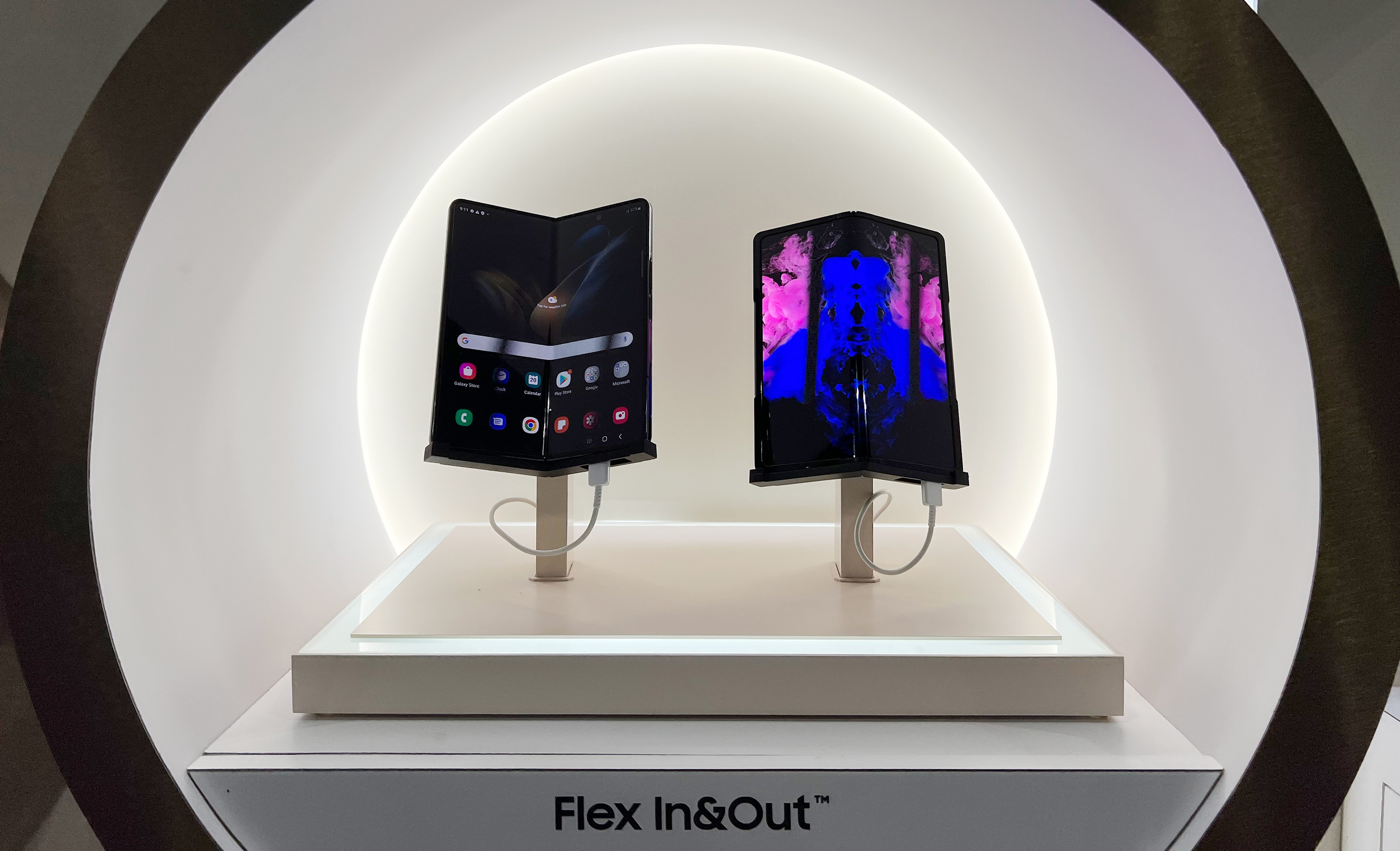
Samsung Display has unveiled two new innovative OLED screens that look, at first glance, like the future of laptops and tablets.
The first of these innovations is the new Rollable Flex, an OLED display that unfurls from a 1.9-inch long (49mm) scroll shape to a 10-inch (254mm) screen, while the second is an OLED display that can recognize fingerprints anywhere on the screen.
The unfurling OLED is relatively self explanatory and is something we’ve seen on both this scale from TCL at CES 2021 and on a larger scale from the LG R-Series Rollable OLED. That said, it’s interesting to see Samsung Display continue to innovate on the format for potential use in future Samsung Galaxy Fold phones.
The Sensor OLED Display is a little bit tougher to place. It’s obviously sporting a unique feature set that no other OLED screen has had before, but seems like it would make more sense in a doctor’s office than sitting in your living room.
It’s important to remember that these aren’t products that are ready to be shipped out to the world quite yet, but act as a prototype that other manufacturers — like, say, Samsung Electronics, LG Electronics or Sony — can then implement using Samsung technology.
How do the new OLED displays work?
To demonstrate the new panel technology, Samsung Display brought both of them to the Society for Information Display (SID) Week Conference that’s going on now in Los Angeles.
According to Samsung Display, the panels were engineered with new techniques that haven’t been used elsewhere before. The Sensor OLED Display, for example, uses light-sensing organic photodiodes (OPD) instead of traditional sensors so that every spot on the display becomes touch capacitive. When you touch it, the display can then accurately measure biometric information like your heart rate, blood pressure and stress level.
Get instant access to breaking news, the hottest reviews, great deals and helpful tips.
Because OLED displays are naturally flexible, the Rollable Flex can roll up when it’s not in use — a handy feature if you want to toss a full-size tablet in a small bag or purse. More interesting, though, is the Flex In & Out display that uses the same principles to be folded both inwards and outwards. Traditional foldable phones can only fold one way, but this display would change that.
When we’ll see these products in our homes and offices remains to be seen — but their public appearance in LA suggests that we could be seeing them sooner rather than later.
More from Tom's Guide
- 7 ways the Samsung Galaxy Z Fold 5 could beat the Google Pixel Fold
- Forget Samsung Galaxy Z Fold 5 — why you should wait for Galaxy Z Fold 6
- Google is exploring flip-style foldables in addition to Pixel Fold

Nick Pino heads up the TV and AV verticals at Tom's Guide and covers everything from OLED TVs to the latest wireless headphones. He was formerly the Senior Editor, TV and AV at TechRadar (Tom's Guide's sister site) and has previously written for GamesRadar, Official Xbox Magazine, PC Gamer and other outlets over the last decade. Not sure which TV you should buy? Drop him an email or tweet him on Twitter and he can help you out.
